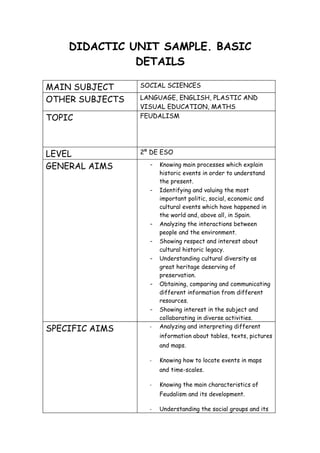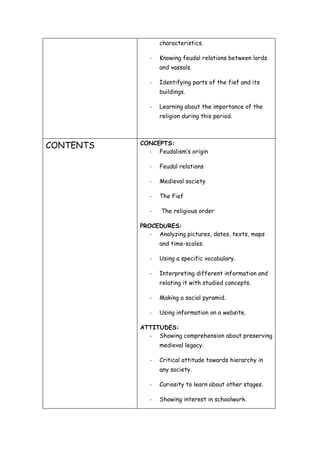This document provides details on a didactic unit about feudalism for 10th grade Spanish students. The unit's main subject is social sciences, with connections to other subjects. It aims to teach students about feudalism and medieval society through analyzing texts, maps, and pictures. Students will learn about the origins of feudalism, feudal relations between lords and vassals, and medieval social groups. A variety of individual and group activities are outlined to help students understand feudalism and daily life in the Middle Ages. Students will be assessed on their knowledge of the invasions leading to feudalism, medieval society's organization, and the clergy's structure during this period.






